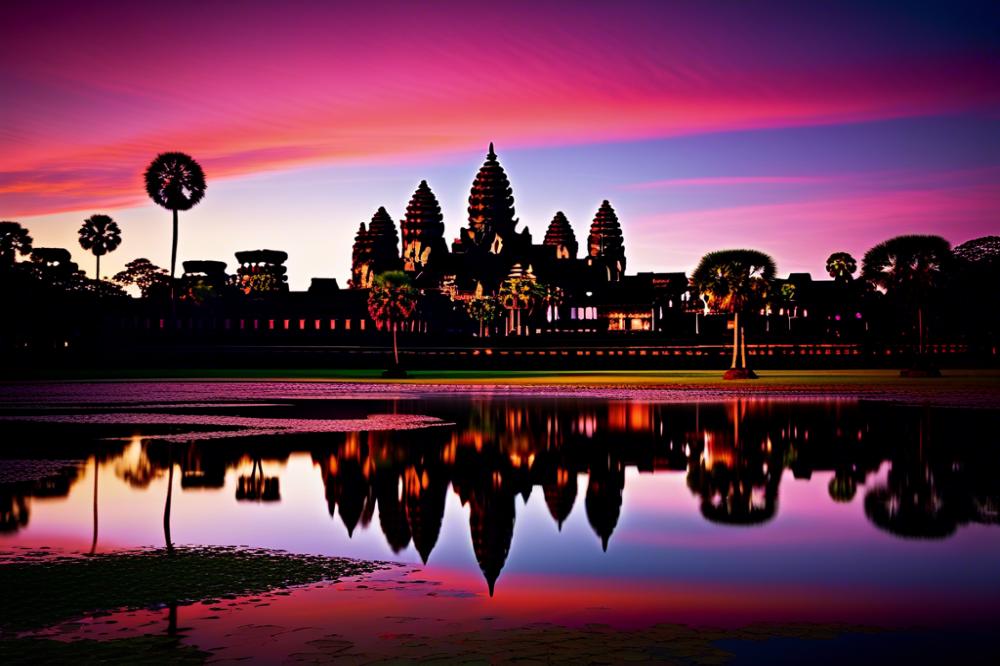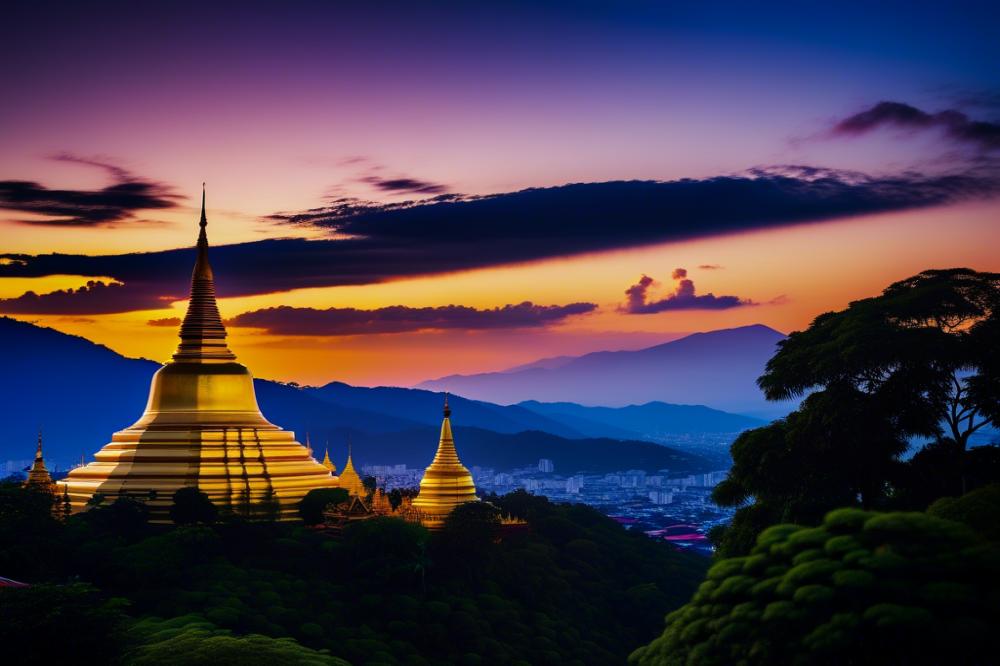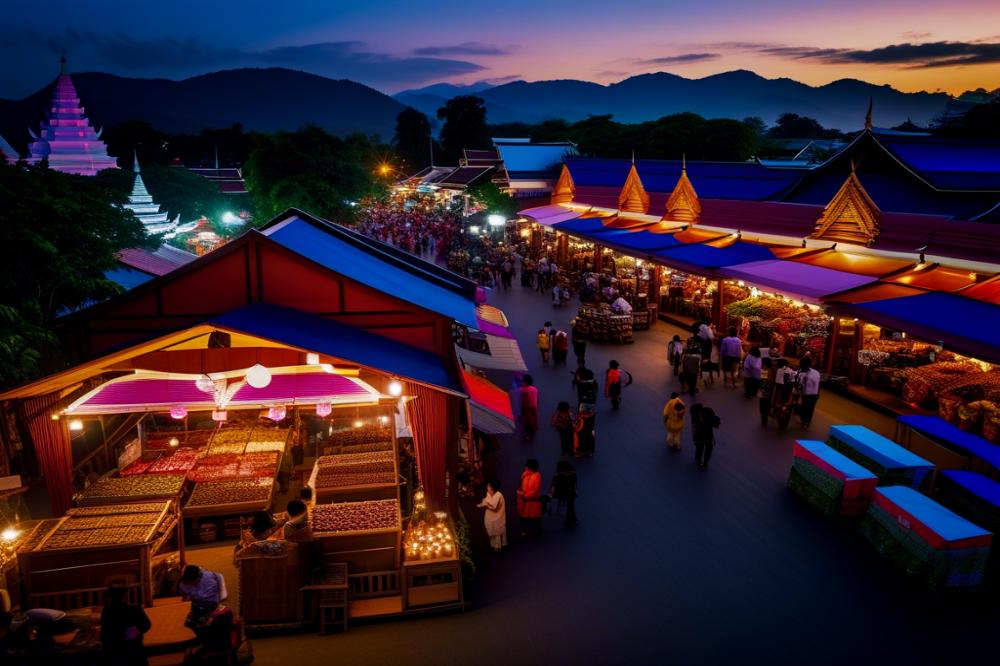Exploring the temples of Angkor Wat
Angkor Wat stands proudly as a UNESCO World Heritage Site, drawing visitors from around the globe. This magnificent temple complex, renowned for its stunning Khmer architecture, is a testament to Cambodia‘s rich cultural heritage. Built in the 12th century, it serves not only as a symbol of national pride but also as a significant part of the nation’s history. Structures within this ancient complex reveal the extraordinary craftsmanship of the Khmer Empire.
Traveling to these ancient ruins offers a profound experience. Visitors can expect to wander through sprawling grounds adorned with intricate carvings and lush landscapes. Each temple presents its own story, echoing the spirituality that resonated with the people who once thrived here. Exploring such sites helps illuminate Cambodia‘s past. Many temples lie nestled within the Angkor Archaeological Park, each promising a unique adventure.
The significance of Angkor Wat stretches far beyond its physical beauty. This temple complex draws people for both exploration and reflection. Travelers often find themselves captivated by the deep sense of history ingrained in the very stones. As you walk through the temple corridors, remnants of a glorious civilization whisper tales of devotion, artistry, and innovation. Archaeology enthusiasts will marvel at how these monuments survived the passage of time, and the ongoing preservation efforts spotlight the need for sustainable tourism in the region.
A visit to Angkor Wat is more than just a journey; it is a bridge to understanding Cambodia’s identity. For those who seek to immerse themselves in spirituality and historical significance, the experience is unparalleled. Numerous pathways meander through the park, leading the way to moments of contemplation. Engaging with the temples allows travelers to appreciate a history that still resonates with the Cambodian people today.
The Majesty of Angkor Wat
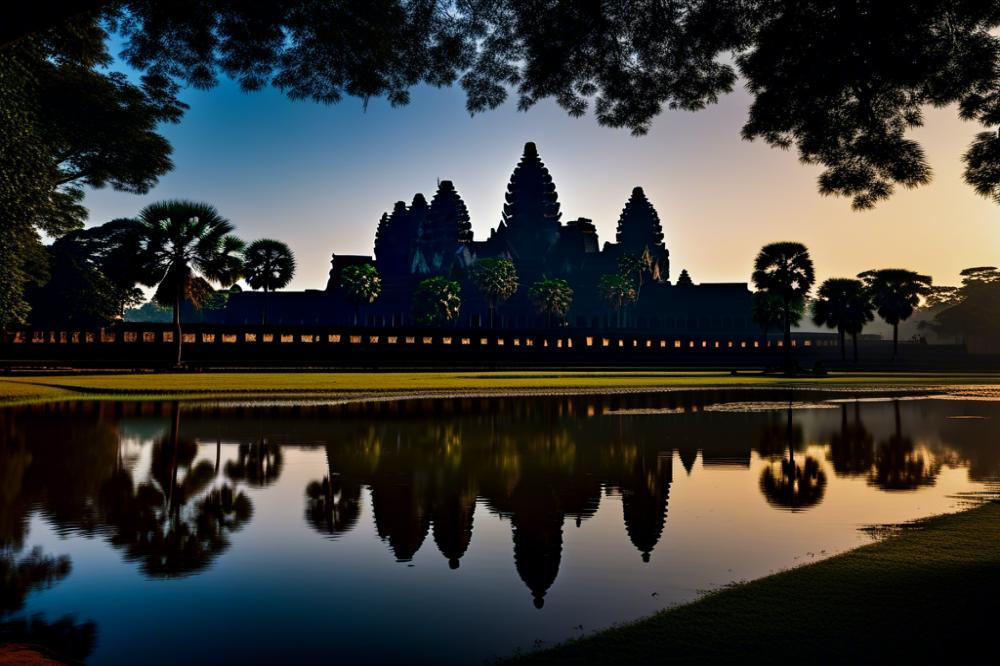
Angkor Wat stands as a towering symbol of ancient Cambodia. This remarkable site showcases intricate architecture and vast scale that astonishes visitors. Designed originally as a Hindu temple, it later transformed into a Buddhist shrine. Its layout features a central tower that rises majestically, representing Mount Meru, the center of the universe in Hindu and Buddhist cosmology. Surrounding this tower are multiple concentric walls and moats, illustrating layers of spiritual meaning.
The temple complex measures over 162 hectares, making it one of the largest religious monuments in the world. Stone carvings adorn walls, telling stories from Hindu mythology. These detailed sculptures highlight artistic craftsmanship from the Khmer Empire. Visitors often marvel at the sophisticated design, which includes corbel archways and lotus-bud motifs. Each aspect reflects a deep connection to spirituality. Every corner of this UNESCO World Heritage site invokes awe and reverence.
Historical context adds depth to its grandeur. Built in the early 12th century under King Suryavarman II, Angkor Wat reflects the pinnacle of Khmer architecture. It served as a pilgrimage site for thousands over the years. The use of sandstone allowed for precise carvings and enduring structures. Archaeological evidence reveals that this site drew both local devotees and travelers from far away. Today, it remains an essential part of Cambodia’s cultural heritage, attracting those interested in history and spirituality.
The temple complex is not merely an architectural wonder; it embodies a blend of faith and power during the empire’s height. Its design illustrates the intricate relationship between the divine and the earthly realm, offering visitors insight into the beliefs that shaped ancient life. Pilgrims and tourists alike walk the paths once trodden by kings and priests, feeling the vibrant energy that continues to pulse through its ancient ruins.
Travelers to the Angkor Archaeological Park today find themselves gazing at a masterpiece of human ingenuity. While thousands visit each year, many still seek a deeper understanding of its significance. The majestic presence of Angkor Wat invites exploration, urging all to discover its timeless beauty and spiritual resonance.
Exploring the Angkor Archaeological Park
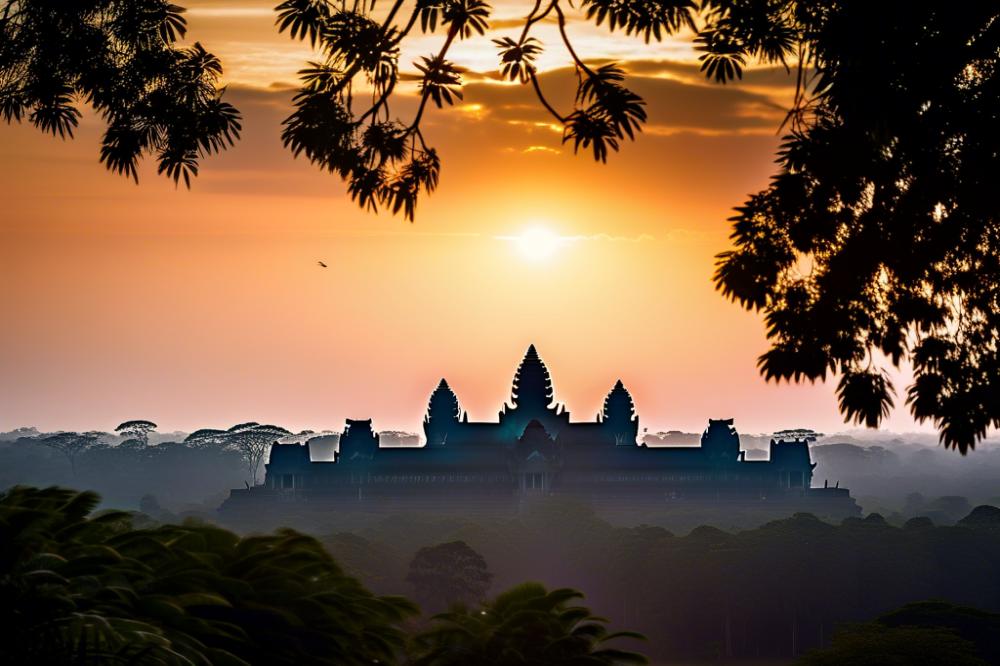
The Angkor Archaeological Park is a sprawling treasure trove in Cambodia. It houses many significant temples, including the iconic Angkor Wat. This UNESCO World Heritage Site is rich in history and spirituality. Visitors come from all over to marvel at these ancient ruins and experience the cultural heritage of this place.
Getting around the park can be an adventure in itself. Numerous routes wind through the landscape, offering various options for exploring. Travelers can rent bicycles or hire a tuk-tuk for convenience. Each path you take reveals different aspects of the park’s beauty. Signs and maps are available, helping guide you through the area.
Among the treasures of this archaeological wonder, Bayon Temple stands out. Known for its enormous stone faces, it embodies the artistry of the Khmer Empire. The structure is captivating and invites contemplation of its history. Nearby, Ta Prohm showcases the power of nature reclaiming man-made structures. Tree roots intertwine with stone, creating a surreal atmosphere. Both locations evoke a deep sense of connection to the past.
Many choose to explore the park in the early morning or late afternoon. These times offer cooler temperatures and stunning light for photography. By planning your visit carefully, you can appreciate the majesty of these temples without feeling rushed. Overall, the Angkor Archaeological Park serves as a vivid reminder of Cambodia’s rich history and spiritual heritage.
Cultural and Spiritual Significance
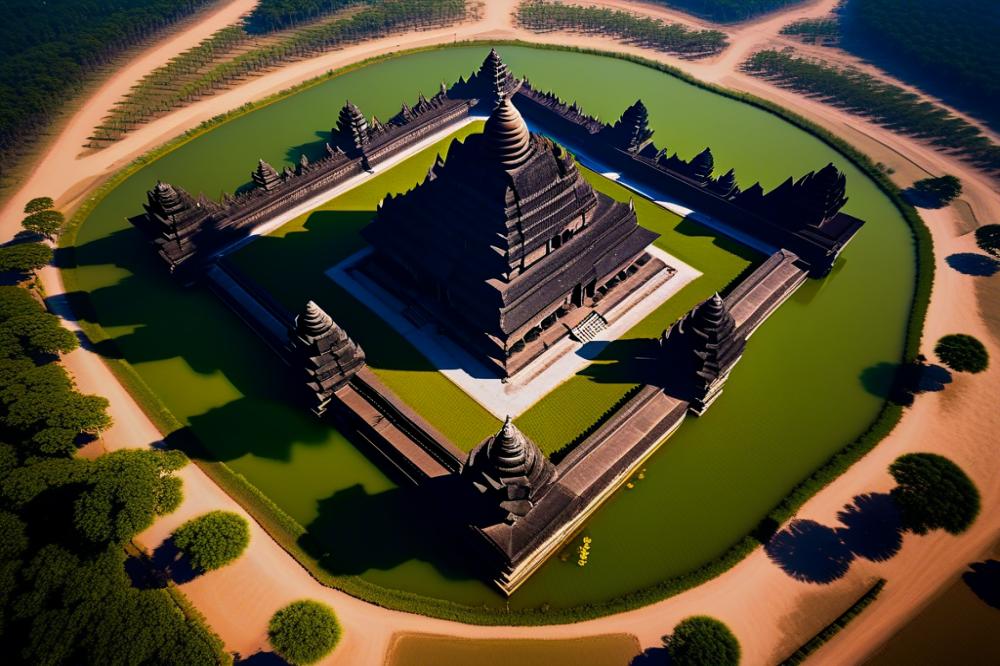
The temples in Angkor are not just ancient ruins. They symbolize the deep spiritual practices of the Khmer people and embody the rich history of Cambodia. Walking through these structures, visitors often feel a sense of awe and connection to something larger than themselves. Many travelers find their experiences to be transformative, leading to moments of reflection that resonate long after their visit.
Spirituality plays a crucial role in the lives of many Cambodians. The temples served as places of worship and devotion for centuries. Today, they still function as spiritual hubs. Daily rituals and ceremonies take place among the stone carvings and towering spires. These practices connect the people with their ancestors, creating a bridge to the past. They foster a sense of community and shared identity in a rapidly changing world.
For countless visitors, the journey through Angkor Archaeological Park feels intensely personal. Tourists often share stories of meditative moments while exploring the moats and sacred grounds. The lush surroundings and intricate designs invite contemplation and peace. Some travelers describe experiencing a profound sense of gratitude while gazing at the temple’s detailed artistry. Others report feeling a sense of healing amid the bustling crowds.
National pride is evident among locals who cherish these historical sites. Angkor Wat’s inclusion on the UNESCO World Heritage list highlights its importance to global cultural heritage. Many Cambodians regard these ancient temples as symbols of resilience. They reflect the enduring spirit of a nation that has faced adversity throughout history. The temples stand as reminders of a vibrant culture that continues to thrive despite challenges.
Every visit to the temples offers a chance to learn about not just history but also modern spirituality in Cambodia. The past intertwines with the present in these sacred spaces. Travelers from across the globe leave with a deeper understanding of their own beliefs and connections. Personal encounters and shared experiences at Angkor foster a unique dialogue between cultures. This exchange enriches every journey and adds layers of meaning to the trip.
Archaeology and Preservation Efforts
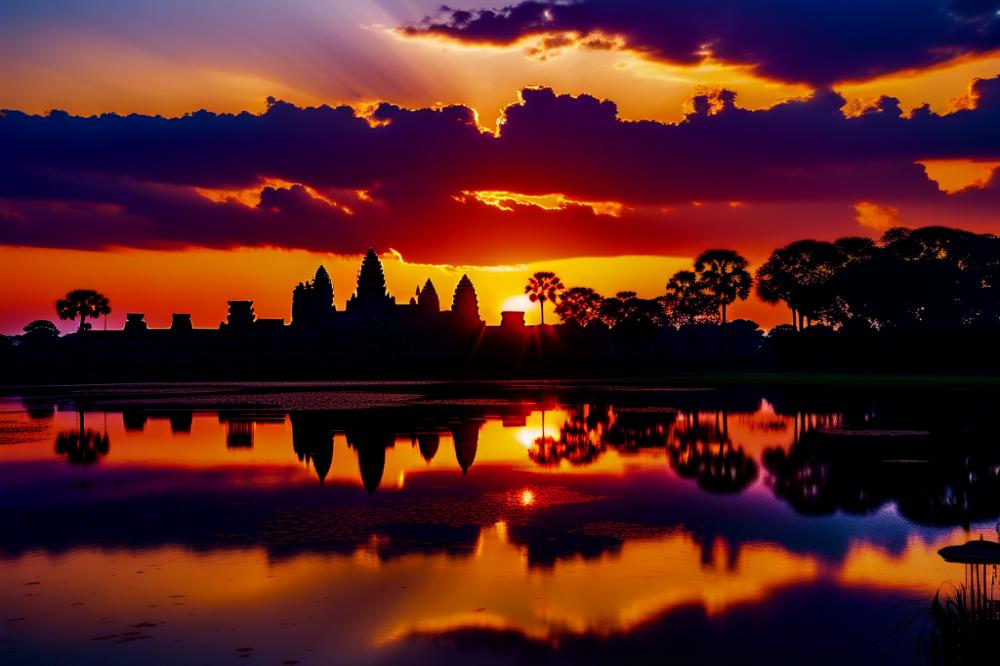
Overview of Archaeological Discoveries in the Region
Many archaeological findings have emerged from the vast area of Angkor Archaeological Park. Researchers have uncovered ancient structures, inscriptions, and artifacts that reveal stories about Cambodian history and culture. Excavations have also unveiled evidence of the city’s complex water management system. These discoveries help historians better understand the lives of the people who once thrived in this region. Temples such as Ta Prohm and Bayon showcase exquisite carvings that offer insights into the spirituality of their creators. Each artifact adds a layer to the narrative of this magnificent civilization.
Discussion on Preservation Challenges Faced by Angkor Wat and the Temples
Preservation of these ancient ruins faces significant challenges. Environmental factors like humidity and rain pose risks to the stone structures. Additionally, the rapid growth of vegetation can damage fragile carvings. Local authorities and organizations work tirelessly to combat these issues. Funding for restoration projects can be limited, making it difficult to maintain these historic sites. Furthermore, the effects of climate change raise concerns about the long-term survival of the temples. Balancing modernization with the preservation of cultural heritage presents a complex dilemma.
The Impact of Tourism on Conservation Efforts
Tourism plays a double-edged sword in the context of preserving the temples. Millions of travelers flock to the site each year, drawn by its stunning architecture and rich history. While tourism boosts the local economy, it also creates wear and tear on the ancient structures. Foot traffic can contribute to erosion and damage of the delicate stonework. Consequently, conservationists strive to implement strategies to protect these sites while still welcoming visitors. Education about respectful travel behavior is crucial in maintaining the integrity of the temples. Visitors can help support conservation by following established guidelines and participating in local initiatives.
Travel Tips for Visiting Angkor Wat
Best Times to Visit and Recommended Itineraries
Visiting Cambodia’s magnificent temples is best during the dry season, which runs from November to February. This period offers cooler temperatures and less rain, allowing travelers to explore the ancient ruins comfortably. For first-timers, a three-day itinerary can be ideal. Start with a sunrise visit to see the temples bathed in golden light. Explore Angkor Thom and its famous faces the next day, then dedicate the final day to the outskirts of Angkor Archaeological Park. Each site reveals layers of history and spirituality.
Practical Advice on Transport, Accommodation, and Local Culture
Getting around Cambodia might seem daunting, but tuk-tuks provide a convenient and affordable option. Many visitors prefer to hire a driver for the day. This choice offers flexibility and ensures you can see everything at your own pace. In terms of accommodation, Siem Reap has a wide range of options, from budget hostels to luxury resorts. Stay somewhere close to the temples to minimize travel time and maximize exploration. Understanding local culture is crucial. Respectful attire is necessary when visiting temples. Shoulders and knees must be covered to honor the spiritual significance of these sites.
Suggestions for Guided Tours and Exploration Techniques
Joining a guided tour can enhance your experience significantly. Knowledgeable guides share fascinating stories about the temples and the people who built them. Consider small group tours for a more personal touch. Alternatively, exploring independently allows for spontaneous discoveries. Make use of maps and mobile apps to navigate the vast area. Staying hydrated is essential as you wander through the sites. Early mornings offer a peaceful atmosphere, and the light is perfect for photography. Embrace the unique blend of travel, archaeology, and cultural heritage that Angkor offers. Take your time and soak in the details of this incredible destination.
Final Reflections on Angkor Wat
Angkor Wat stands as a symbol of Cambodia’s rich history and cultural significance. This magnificent site draws visitors from around the globe, showcasing the architectural brilliance of the Khmer Empire. It represents a unique blend of spirituality and artistry that resonates deeply with travelers.
The temples offer breathtaking views and stunning carvings that tell stories of ancient times. Walking through this grand complex, one can feel the echoes of history. Every stone seems to whisper tales of devotion and creativity. Numerous visitors have praised the beauty and intricacy of the structures, making it a bucket-list destination.
Experiencing these temples is more than just sightseeing. It provides an opportunity to connect with the heritage of a nation. Observing rituals still performed today adds another layer to this rich tapestry. Whether it is the sunrise illuminating the spires or the quiet moments in the shaded alcoves, each visit can be profoundly moving.
In a world that seems to move quickly, places like this remind us of our roots. They invite us to slow down and appreciate the stories behind the monuments. The legacy of this site continues to inspire cultural appreciation and respect for history. As currents of time sweep us forward, places like these anchor us, offering a glimpse into the past while paving the way for future generations to explore.
In summary, a visit to Angkor Wat offers more than beautiful scenery. It fosters a deeper understanding of Cambodia’s cultural identity. Exploring such historic sites enriches our lives. They challenge us to reflect on our shared human experience and celebrate the diversity of our world.

